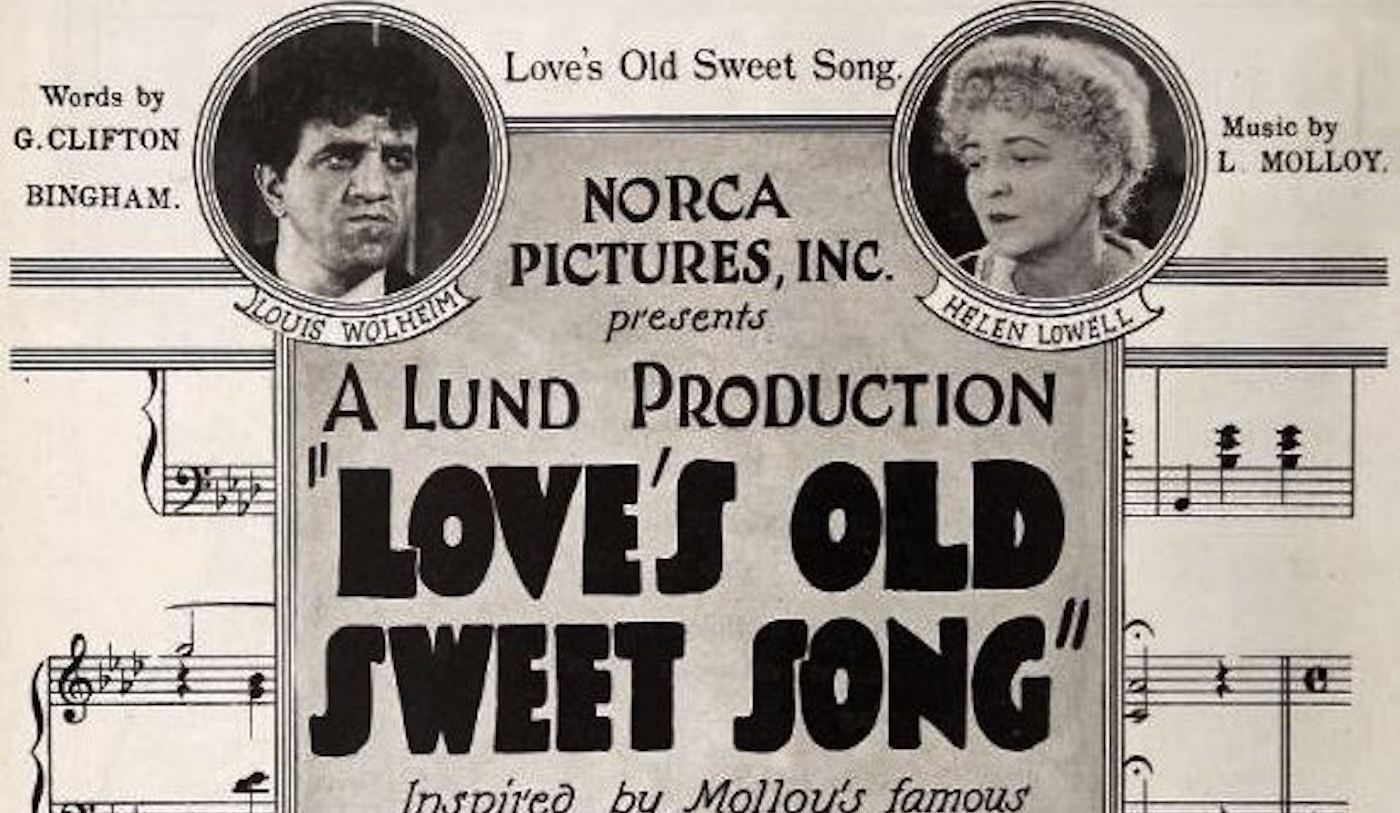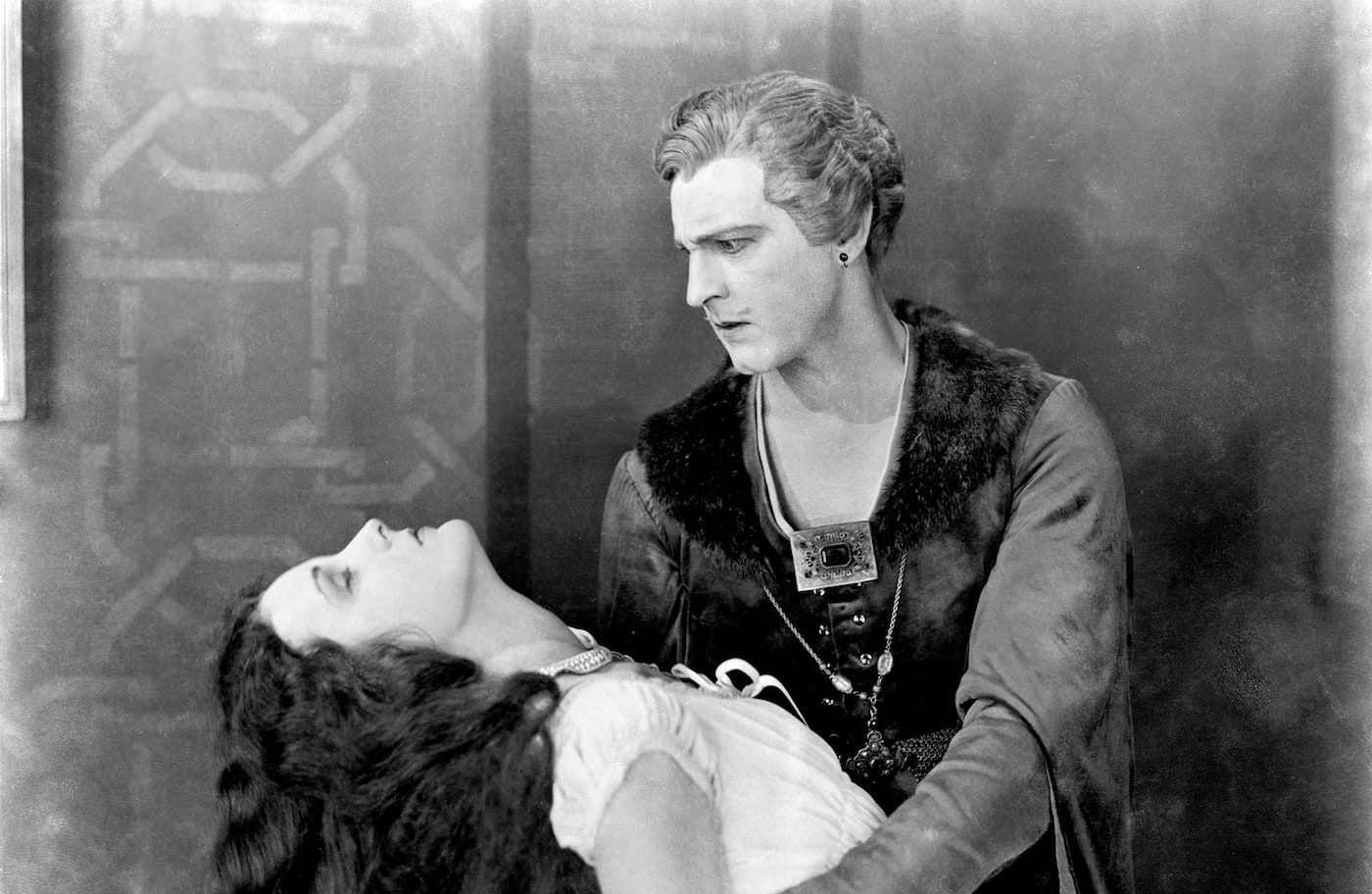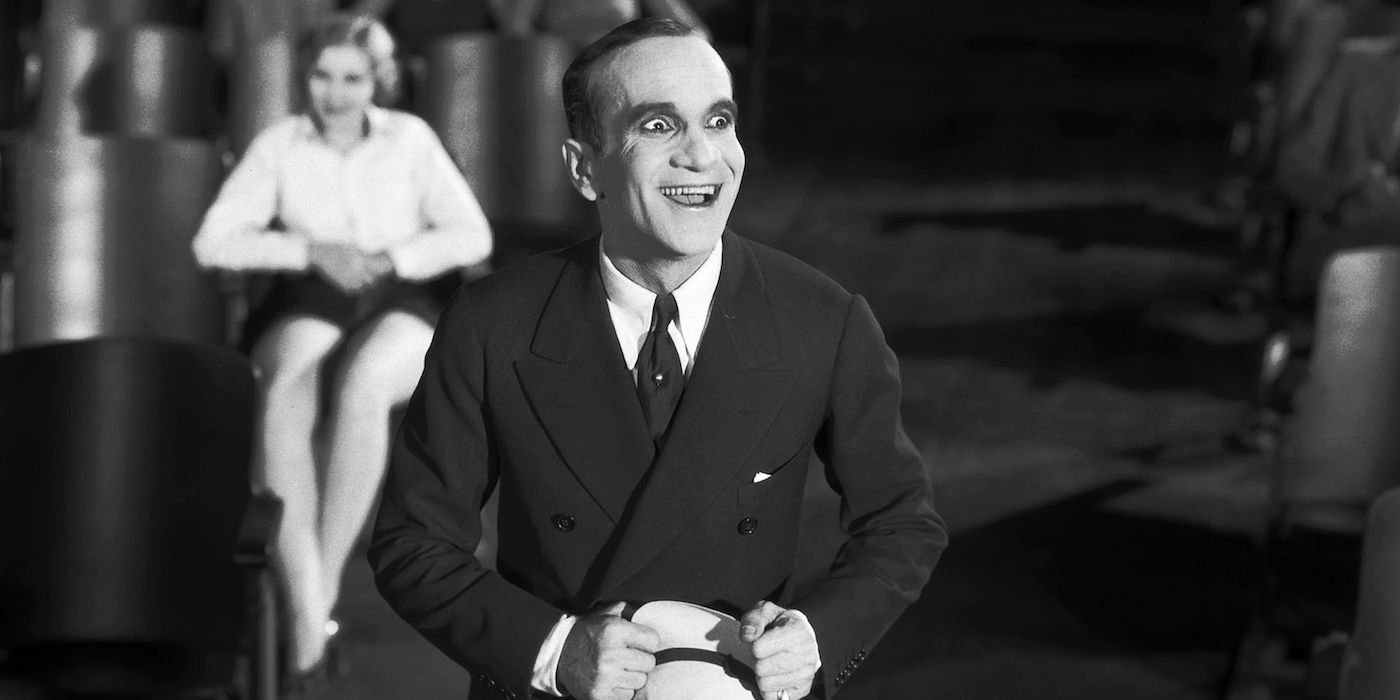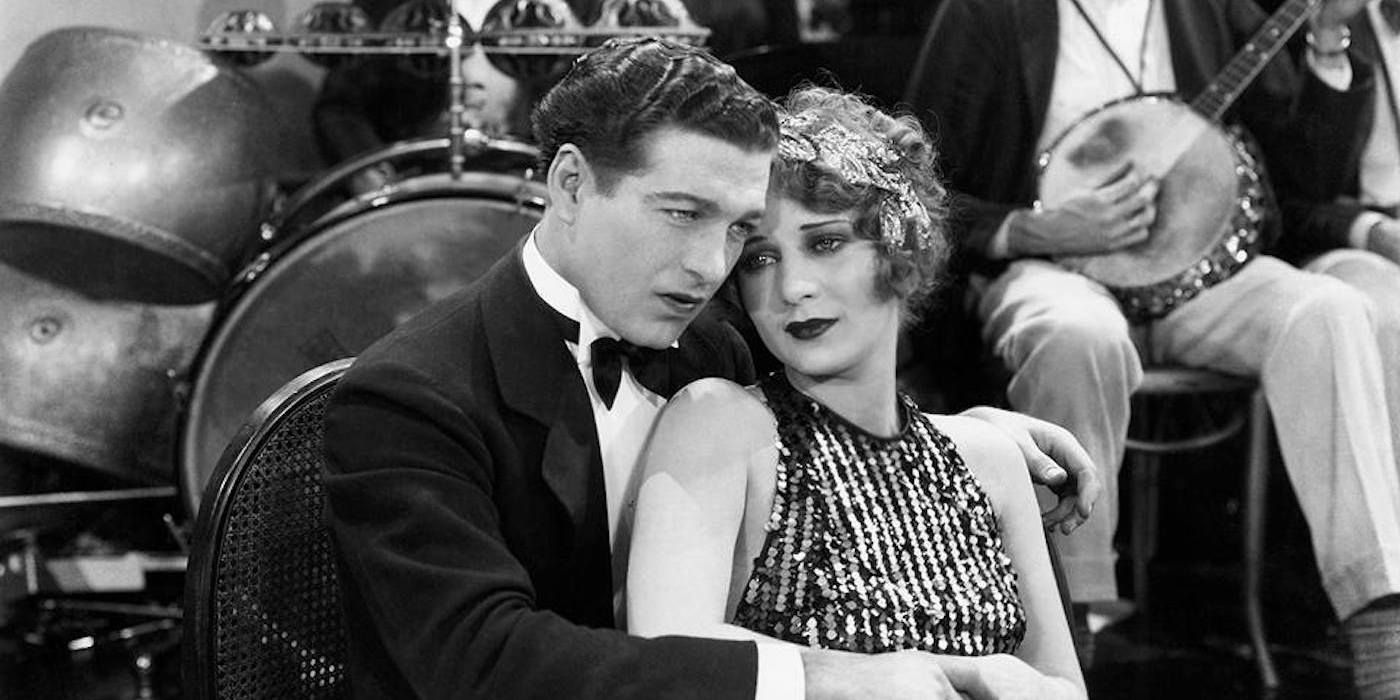Film enthusiasts often cite Alan Crosland's The Jazz Singer as the movie that first introduced sound to the cinematic medium and thus revolutionized the art form. While it is true that The Jazz Singer made a loud splash in Hollywood upon its 1927 release, the true origins of sound film are not so absolute. The technology was not a complete novelty when The Jazz Singer first hit theaters, and likewise, it still had a long road ahead of it after the credits rolled.
Sound Film In The Silent Era
Experiments in pairing images with synchronized sound at the movies date back to the turn of the twentieth century, almost to the dawn of cinema itself. Throughout the silent era, film screenings would often come with live performers in the theaters, adding lip-synced dialogue, music, and auditory atmosphere to the exhibition. Under The Edison Company in the 1890s, inventor W.K.L. Dickson invented the Kineto-phonograph, which combined Edison's kinetoscope and phonograph innovations into one apparatus that played film and sound concurrently. In 1913, Dickson further developed a version of the device that could project the image on screen. Using new amplification tools, The Edison Company produced a number of short films with this technology.
These early sound film methods involved recording audio onto discs and then syncing them with the projector. Naturally, though, this posed issues with synchronization, as the disc and the film had to be operating in stringent harmony to create the intended illusion. German inventors Josef Engl, Joseph Massole, and Hans Vogt thus created an alternative method that avoided these issues. Their method involved recording the sound directly onto the film. Known as optical sound, or sound-on-film (as opposed to Dickson's sound-on-disc), it converted sound into light using photocell technology, and recorded the light alongside the image on the same strip of film. That strip could then be put into a projector and translated back into sound for the audience. It was called the Tri-Ergon method, and it borrowed heavily from the phonographic innovations that American filmmaker and inventor Lee de Forest developed in the 1910s and exhibited in the early 1920s with sound footage of musicians and comedians, as well as the narrative short film, Love's Old Sweet Song.
Warner Brothers and the Vitaphone
The sound-on-film method would eventually become the industry standard for sound film, but in the early years, it competed with sound-on-disc technologies. Warner Brothers, for example, used Western Electric's Vitaphone on their earliest sound films, including The Jazz Singer.
Bruce F. Kawin and Gerald Mast's A Short History of the Movies outlines how Vitaphone fell into Warner Brothers' lap after Paramount rejected it in 1925. Although sound had been done before, most studios saw it as an expensive endeavor that could do more harm than good by raising the cost of production. Warner Brothers was a second-tier studio at the time, though, and sought to break into the world of vertically integrated theaters with the Vitaphone acquisition as a unique luxury.
Beginning in 1926, Warner Brothers showcased a number of short sound films with Vitaphone. Much like the de Forest experiments of the same era, these shorts captured auditory events like speeches and orchestra performances on film. Accompanying these shorts was the premiere of their first sound feature— not The Jazz Singer, but Crosland's Don Juan, which contained a synchronized soundtrack of music and sound effects.
For A Talkie, The Jazz Singer Is Rather Mute
The Jazz Singer thus was not even the first sound feature using its own technology, or under its studio. However, one can see the obvious rationale for overlooking Don Juan. As aforementioned, the film included music and sound effects, but no dialogue. The Jazz Singer at least got a few words in, but even then, it was limited.
Although some might defend The Jazz Singer's distinguished status by calling it the first "talkie," the film contains very little talking. The Vitaphone is primarily reserved for the film's musical numbers. Only between the songs does star Al Jolson get in a couple of lines of speech, but they are short, simple exclamations. Text slides over diegetically silent sequences still communicate most of the dialogue, and throughout the film's eighty-eight-minute runtime, it hardly contains more than a few seconds of spoken word. In essence, it hardly offered more on-screen sound than the Warner Brothers or de Forest shorts preceding it.
After The Jazz Singer, Warner Brothers would go on to produce several more part-talkie features with Vitaphone, as would Fox with their sound-on-film Movietone technology. However, they were still blends of silence and sound. The first feature-length movie to truly offer synchronized sound dialogue all the way through was 1928's Lights of New York, another Warner Brothers-Vitaphone project, but this time a crime drama directed by Bryan Foy. This could be considered the first full talkie.
Of course, the first talkie does not necessarily mean the first sound film. Awarding the latter title thus opens up a semantic debate for film historians. True, The Jazz Singer was the first feature to include dialogue, but the vast majority of the film does not contain talking, and most scenes still endorse silent film tropes save the music and sound effects. Meanwhile, by the time Lights of New York came out, Warner Brothers had produced several other part-talkies, and the advent of sound film as a whole was nearly a generation old.
Legend and Legacy Bolsters The Jazz Singer's Mythic Novelty
Hence, naming the first sound film may be an eternal dispute, depending on one's definition of sound as it pertains to the movies. The Jazz Singer is just as dubious of a contender as any other sound experiment in the first few decades of cinema. However, one should still take into consideration that even if The Jazz Singer's 1927 novelty is grounded in myth, it still managed to garner a lasting legacy.
This is partially due to Warner Brother's clever roll-out of the film. According to film historian Donald Crafton in his book, The Talkies: American Cinema's Transition to Sound, 1926-1931, Warner Brothers included a clause in their Vitaphone contract that essentially forced the cinemas to keep The Jazz Singer in theaters for a long run, increasing its potential success in a time when theaters had high movie turn-over. Likewise, before The Jazz Singer, most experiments in sound film could not get wide releases, for theaters did not have the proper equipment. For The Jazz Singer, Warner Brothers invested in the upgraded technology for their own theaters, and thus pushed other studios to do the same, building incentive for more sound film production in the future.
There was also some behind the scenes drama that could have led to increased public interest in the film. According to statements featured in Jeannie Basinger and Sam Wasson's Hollywood: The Oral History, Warner Brothers was in deep financial debt after their Vitaphone acquisition, and The Jazz Singer was either going to make or break them. Then, the day before The Jazz Singer's premiere, Sam Warner—the second youngest of the four original brothers, and Vitascope's greatest champion among them—died of pneumonia. The real-life tragedy very well could have brought more people to the theater that night, and contributed to the film's legendary status.
Famously, Al Jolson's first line of spoken dialogue in The Jazz Singer was "You ain't heard nothing yet!" While it sounds prophetic for the state of cinema at the time, in actuality, audiences very well could have heard a whole lot before The Jazz Singer debut. Nevertheless, given that the film marked a definitive, progressive turning point in the evolution of sound film, the line also has some truth. Cinema's song was indeed just getting started.
"sound" - Google News
April 03, 2023 at 07:00AM
https://ift.tt/jc1pfDE
The First Sound Film Was NOT The Jazz Singer - Collider
"sound" - Google News
https://ift.tt/2hJYkCW
Shoes Man Tutorial
Pos News Update
Meme Update
Korean Entertainment News
Japan News Update






No comments:
Post a Comment